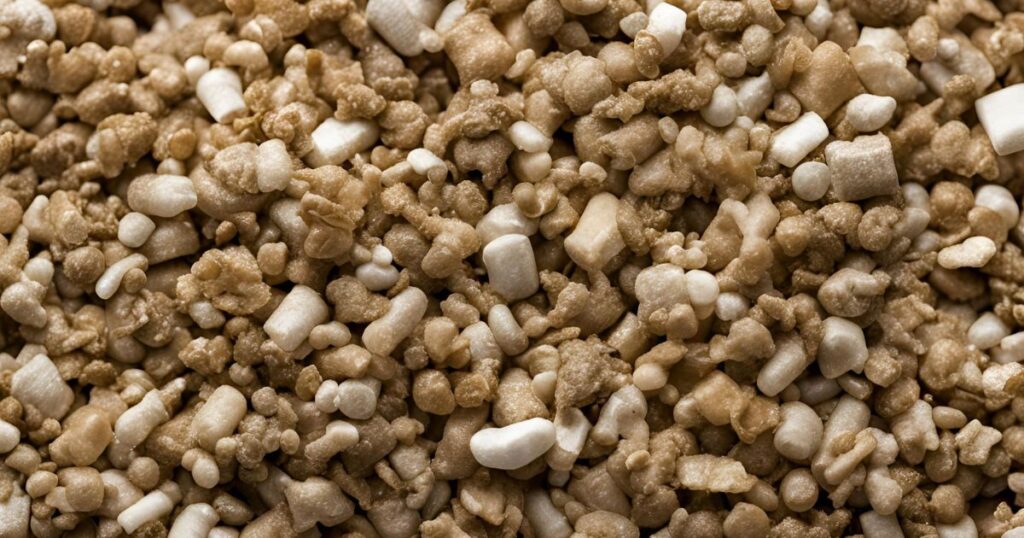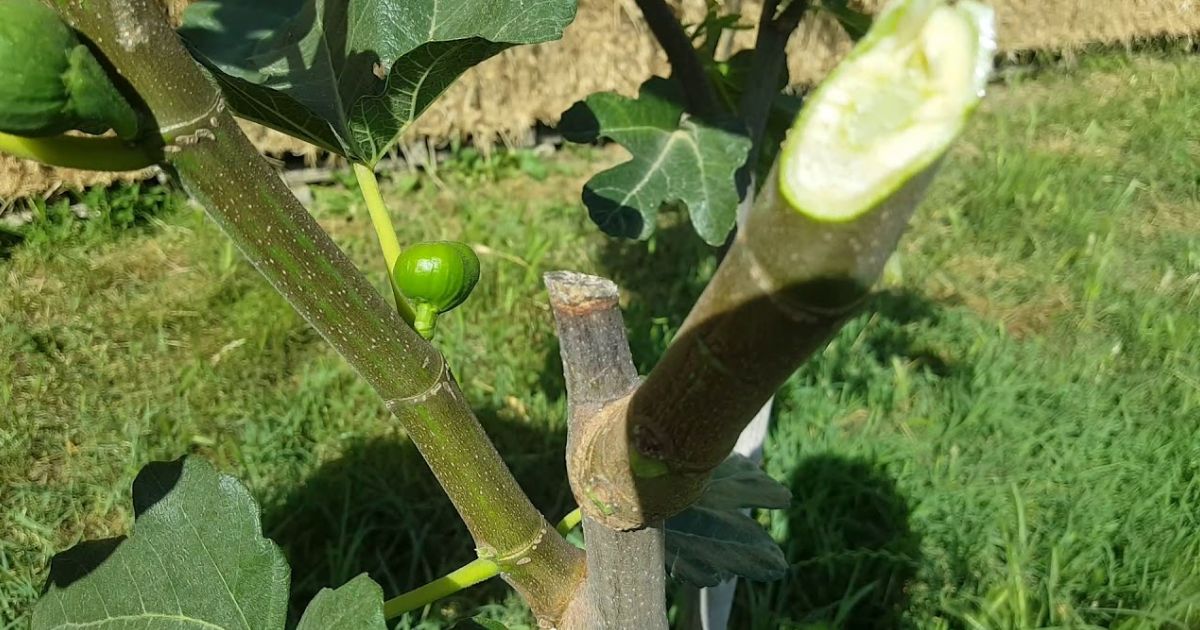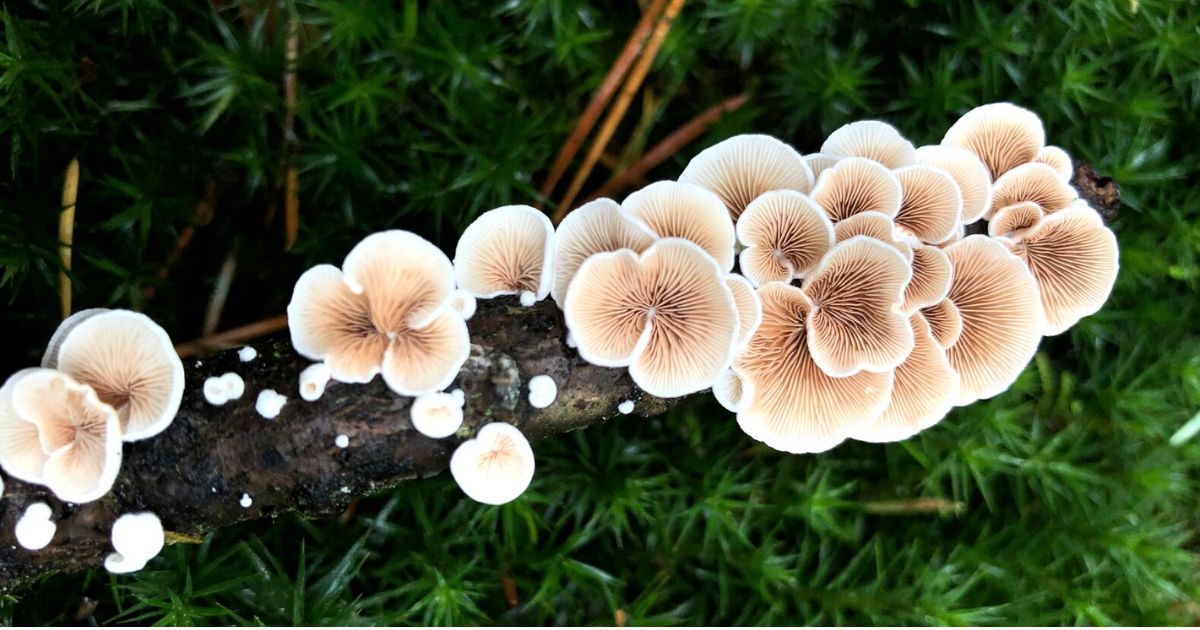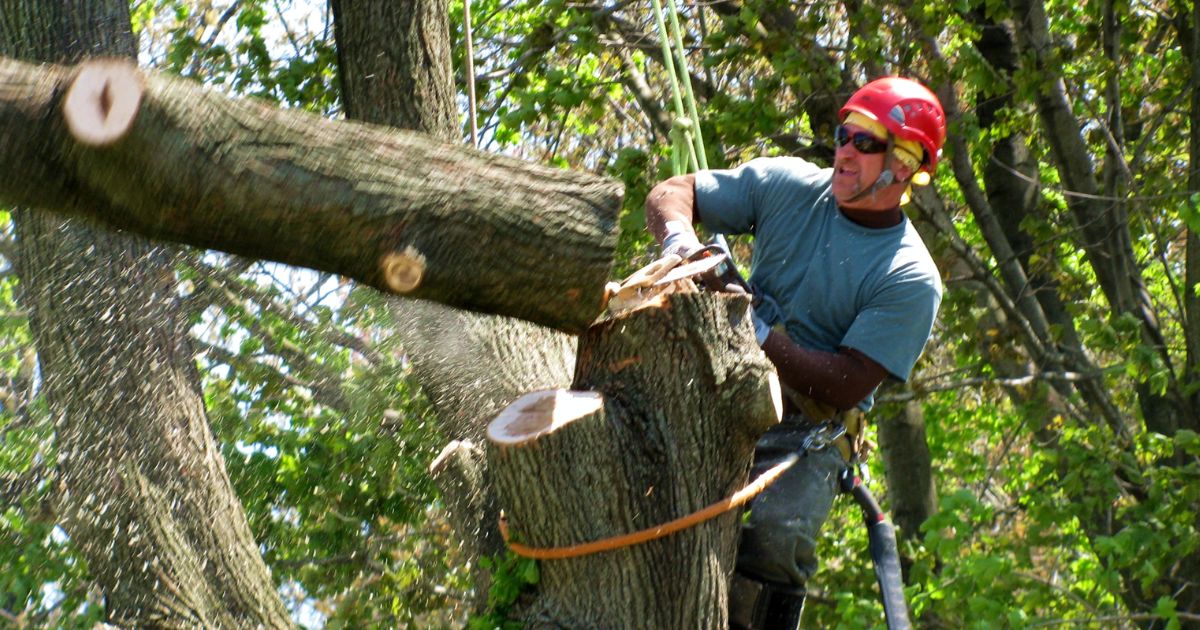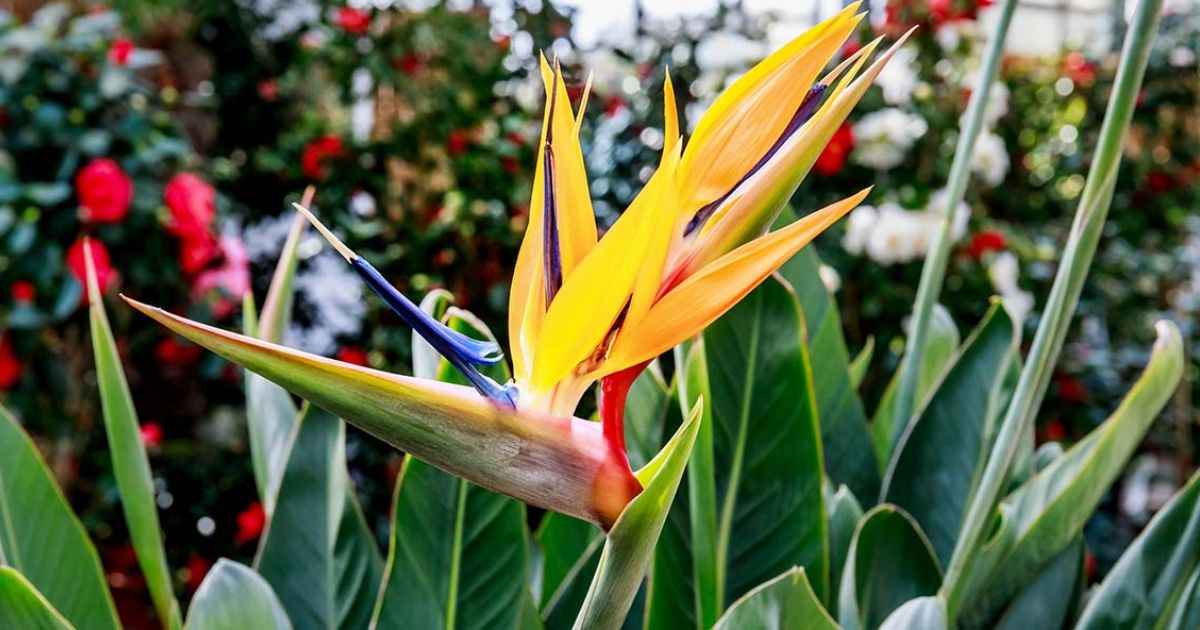Vermiculite is a game-changer for gardeners looking to improve seed germination, soil aeration, and overall plant health. This lightweight, natural mineral enhances soil structure by retaining moisture, improving drainage, and preventing compaction, making it an essential addition to any gardening routine. Whether you’re starting seeds indoors, boosting soil quality for outdoor plants, or experimenting with hydroponics, understanding how to use vermiculite for seed starting, soil aeration, and more can take your gardening success to the next level.
In this guide, we’ll explore the benefits of vermiculite and how to incorporate it into your gardening practices. You’ll learn how vermiculite promotes strong root development in seedlings, prevents overwatering, and enhances soil texture for better plant growth. Whether you’re a beginner or a seasoned gardener, mastering how to use vermiculite for seed starting, soil aeration & more will help you cultivate healthier plants with ease.
What is Vermiculite?
When heated, the naturally occurring mineral vermiculite expands, creating a lightweight, absorbent material widely used in gardening and horticulture. It belongs to the phyllosilicate group of minerals and mainly comprises hydrated magnesium aluminium silicates. When exposed to high temperatures (between 1,000–1,500°F), vermiculite undergoes an exfoliation process, The Best Containers for Seed Storage expanding into accordion-like layers, making it highly absorbent and ideal for soil improvement.
Origin and Formation of Vermiculite
Vermiculite is mined from deposits in countries like the United States, South Africa, China, Brazil, and Russia. It forms naturally over time by weathering certain minerals like biotite and phlogopite. What does vermiculite do Once extracted, raw vermiculite is processed through heat treatment to create the expanded, lightweight form used in gardening.
Different Grades of Vermiculite
Vermiculite is available in various particle sizes, each suited for different applications in gardening:
- Fine-grade vermiculite – Best for seed starting and germination, as it retains moisture and protects delicate seedlings.
- Medium-grade vermiculite – Ideal for mixing with potting soil to improve aeration and water retention for houseplants and garden beds.
- Coarse-grade vermiculite – Used for soil conditioning, The No-Brainer Guide to Starting Seeds Indoors composting, and hydroponic applications where increased aeration is needed.
Why is Vermiculite Useful in Gardening?
Gardeners highly value Vermiculite due to its moisture-retaining and soil-aerating properties. It helps prevent soil from compacting, allowing plant roots to more effectively absorb nutrients and oxygen. Its ability to hold water and slowly release it makes it perfect for seed starting, improving potting mixes, and even hydroponics. Additionally, vermiculite potting soil has a neutral pH, Types of Organic Mulch and Their Benefits does not decompose, and is resistant to mould and bacteria, making it a long-lasting and reliable soil amendment.
Benefits of Using Vermiculite in Gardening
Vermiculite offers several key benefits that make it a valuable addition to gardening practices:
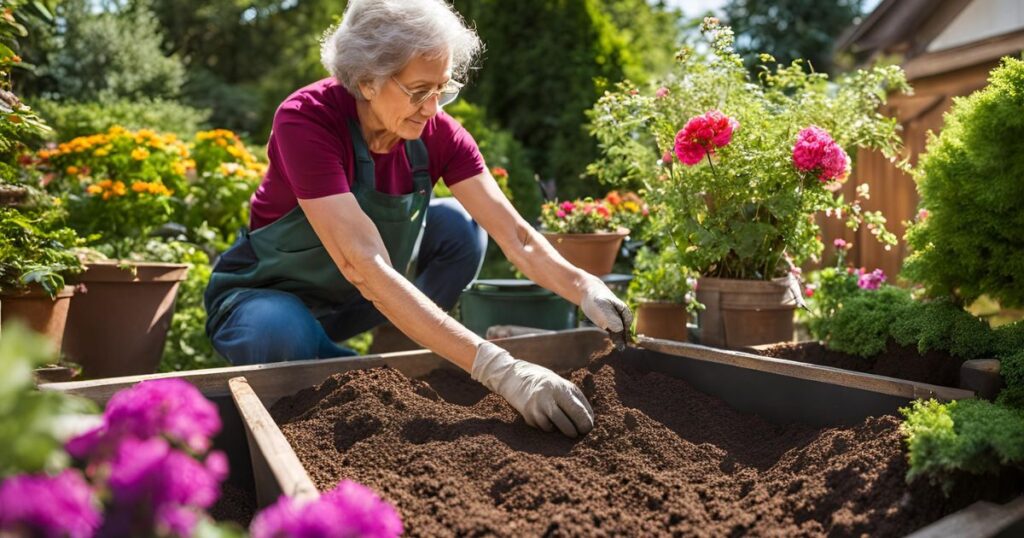
1. Improves Soil Aeration
Vermiculite’s porous structure enhances soil aeration by creating spaces within the soil matrix. This allows roots to access the oxygen they need for respiration, promoting healthier root development and overall plant growth. Improved aeration also facilitates beneficial microbial activity in the soil.
2. Enhances Water Retention
One of vermiculite’s standout properties is its exceptional water-holding capacity. Moisture can be absorbed, held, and released by it gradually to plant roots. This is particularly beneficial in maintaining consistent soil moisture levels, reducing watering frequency, and supporting plant health during dry periods.
3. Aids in Seed Germination
When used in seed-starting mixes, vermiculite provides an optimal environment for germination. Its moisture-retentive nature ensures that seeds remain consistently moist, a critical factor for successful sprouting. Additionally, vermiculite’s sterile and lightweight characteristics create a conducive medium for delicate seedlings to establish without disease risk.
4. Reduces Soil Compaction
Incorporating vermiculite into garden soil helps prevent compaction by maintaining a loose and friable structure. This reduction in compaction allows roots to penetrate more easily, facilitates better water infiltration, and promotes efficient nutrient uptake, all of which contribute to robust plant growth.
5. Prevents Fungal Diseases in Seedlings
Vermiculite’s sterile nature minimizes the risk of soil-borne diseases, such as damping-off, which can adversely affect young seedlings. By providing a clean growing medium, vermiculite helps protect vulnerable seedlings from fungal infections, increasing their chances of developing into healthy, mature plants. what fruit can boost wetness?
how much vermiculite to add to soil unique properties—improving soil aeration, enhancing water retention, aiding in seed germination, reducing soil compaction, and preventing fungal diseases—make it an invaluable component in various gardening applications.
How to Use Vermiculite for Seed Starting
Incorporating vermiculite into your seed-starting process can significantly enhance germination success and promote healthy seedling development. Here’s a step-by-step guide on how to effectively use vermiculite for seed starting:
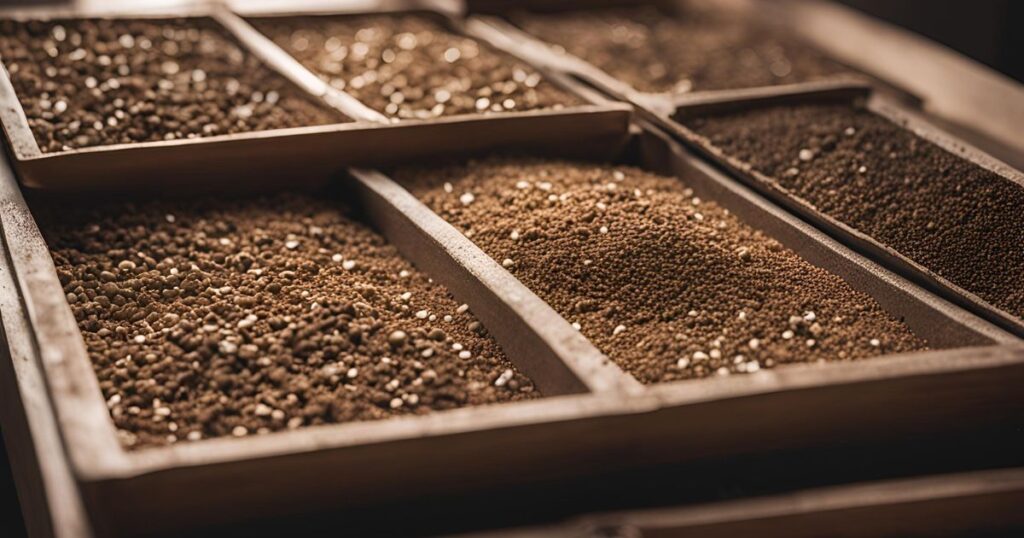
1. Mixing Vermiculite with Seed-Starting Soil
- Prepare the Mix: Combine equal parts of fine-grade vermiculite, peat moss, and sterilized compost to create a well-balanced seed-starting medium.
- Moisten the Mixture: Lightly moisten the blend to achieve a damp consistency, ensuring it’s not overly saturated.
- Fill Containers: Place the prepared mix into seed trays or small pots, 10 Common Seed Starting Mistakes leaving a slight gap at the top.
- Sow Seeds: Plant your seeds at a depth approximately twice their diameter.
- Cover with Vermiculite: Lightly sprinkle a thin layer of fine-grade vermiculite over the sown seeds to aid moisture retention and support seedling emergence.
2. Using Vermiculite as a Top Dressing to Retain Moisture
- Sow Seeds in Soil: After planting seeds in your chosen seed-starting mix, apply a thin layer of fine-grade vermiculite over the surface.
- Moisten the Surface: Gently water the vermiculite layer to ensure it is moist.
- Cover and Monitor: Place a clear plastic cover over the seed trays to maintain humidity. Monitor moisture levels regularly, watering as needed to keep the vermiculite moist.
3. Starting Seeds in Pure Vermiculite and Transplanting Later
- Fill Containers with Vermiculite: Use fine-grade vermiculite to fill seed-starting pots or trays.
- Moisten the Vermiculite: Thoroughly water it until it is evenly moist but not waterlogged.
- Sow Seeds: Plant seeds at the depth advised, typically about twice the seed’s diameter.
- Cover and Germinate: To maintain humidity, use a transparent lid or plastic wrap to cover the containers and place them in a warm, bright location suitable for germination.
- Monitor Growth: Once seedlings emerge and develop their first set of true leaves, transplant them into pots containing a nutrient-rich potting mix to support further growth.
Tips for Better Germination Rates
- Maintain Consistent Moisture: Ensure the vermiculite remains consistently moist throughout germination, avoiding drying out and waterlogging.
- Provide Adequate Light: After germination, place seedlings under grow lights or in a location with sufficient natural light to prevent leggy growth.
- Control Temperature: Keep the germination environment within the optimal temperature range for your specific needs, typically between 65-75°F (18-24°C).
- Ensure Proper Ventilation: While maintaining humidity is essential, air circulation should also be allowed to prevent mold growth and dampen disease.
By following these guidelines, you can successfully use vermiculite to enhance seed germination and promote robust seedling development.
How to Use Vermiculite for Soil Aeration
What does vermiculite do for soil into your garden soil effectively enhances aeration, promotes healthy root development, and prevents common issues like root rot and soil compaction. Here’s how to use vermiculite for soil aeration:
1. Mixing Vermiculite with Garden Soil to Improve Aeration
- Preparation: Use a garden fork or tiller to loosen the existing garden soil to a depth of about 6-12 inches (15-30 cm).
- Application: Evenly spread vermiculite over the soil surface.
- Incorporation: Thoroughly mix the vermiculite into the soil to ensure uniform distribution.
2. Best Ratios for Different Plants and Soil Types
The optimal amount of vermiculite to add depends on your soil’s texture and the specific needs of your plants:
- General Garden Beds: Incorporating vermiculite at a ratio of 10-20% by volume is beneficial for most garden plants. This means adding 1 part vermiculite to every 5-10 parts of soil.
- Moisture-Loving Plants: Plants that thrive in consistently moist conditions can benefit from a higher vermiculite for mushrooms ratio. Adding vermiculite at a ratio of 30-40% by volume helps retain water in the soil for extended periods, maintaining the desired moisture levels for these plants.
- Container Gardening: A mix of 1 part vermiculite to 2 parts potting soil is suggested for potted plants.
3. How Vermiculite Prevents Root Rot and Compaction
- Enhanced Drainage: Vermiculite’s porous structure improves soil drainage by allowing excess water to flow away from plant roots. This reduces the risk of waterlogged soil, which can lead to root rot.
- Reduced Soil Compaction: By incorporating vermiculite, the soil remains loose and friable, preventing compaction. This ensures roots can easily penetrate the soil and access nutrients and oxygen.
Following these guidelines, you can effectively use vermiculite for garden to improve soil aeration, support healthy root systems, and create an optimal plant-growing environment.
Other Uses of Vermiculite in Gardening
Vermiculite is a versatile mineral that offers numerous benefits in various gardening applications beyond its everyday use in seed starting and soil aeration. Here’s how you can utilize vermiculite in different aspects of gardening:
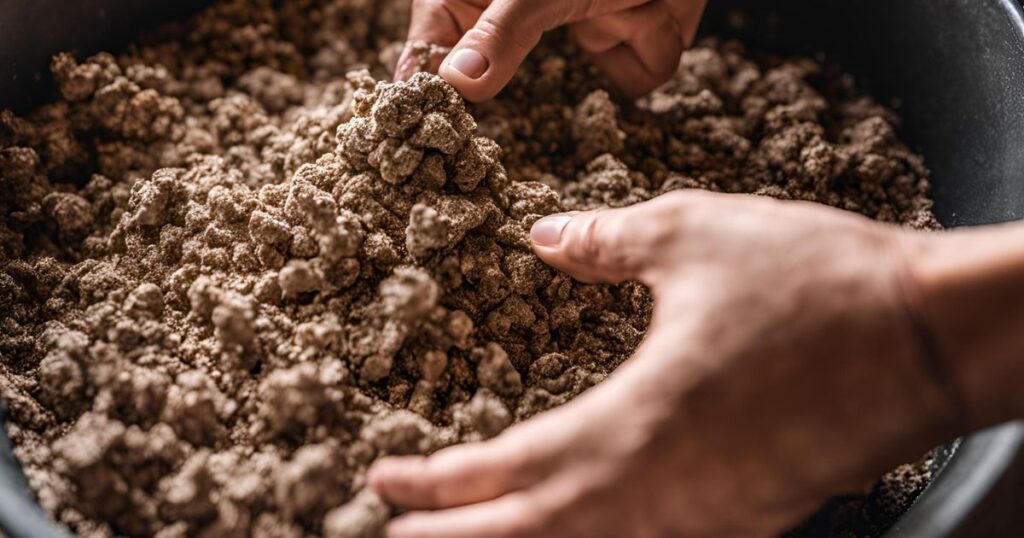
1. Vermiculite for Container Gardening
Maintaining optimal moisture levels and ensuring proper aeration are crucial for plant health in container gardening. Incorporating potting vermiculite into your potting mix can help achieve these conditions.
- Moisture Retention: Vermiculite absorbs water and releases it slowly, keeping the soil moist for extended periods.
- Aeration: It improves soil structure by creating air pockets, allowing roots to access oxygen more efficiently.
- Nutrient Availability: Vermiculite attracts essential nutrients like potassium, magnesium, and calcium, making them more accessible to plants. when are jerusalem artichokes ready to harvest
How to Use:
- Mixing Ratio: Combine 1 part vermiculite with 2 parts potting soil to enhance water retention and aeration in your containers.
2. Adding Vermiculite to Compost
Integrating vermiculite into your compost can improve its quality and effectiveness as a soil amendment.
- Improved Aeration: Vermiculite helps maintain a loose structure in the compost, facilitating better airflow and faster decomposition.
- Moisture Regulation: It aids in retaining moisture within the compost, creating an ideal environment for microbial activity.
How to Use:
- Layering: Alternate layers of organic waste with thin vermiculite layers in your compost bin to enhance aeration and moisture balance.
3. Using Vermiculite for Hydroponic Gardening
Vermiculite is an effective growing medium in hydroponic systems due to its sterile nature and excellent moisture retention properties.
- Sterility: Being sterile, vermiculite minimizes the risk of introducing pathogens into the hydroponic system.
- Moisture Retention: It holds water effectively, ensuring plant roots have consistent access to moisture.
How to Use:
- Growing Medium: Fill hydroponic containers with horticultural vermiculite, thoroughly moistening them before planting. Monitor moisture levels regularly to maintain optimal conditions.
4. Vermiculite in Lawn Care for Better Root Development
Applying vermiculite to your lawn can promote healthier grass growth by improving soil conditions.
- Enhanced Aeration: Vermiculite prevents soil compaction, allowing grass roots to penetrate more deeply.
- Moisture Management: It helps maintain consistent soil moisture, which is essential for robust root development.
How to Use:
- Seeding: After sowing grass seed, thoroughly cover the area with an ¼ inch layer of vermiculite and water. This practice accelerates germination and increases the number of seeds that sprout.
Incorporating vermiculite into these various gardening practices can improve the conditions that allow plants to flourish, leading to healthier and more productive gardens.
Vermiculite vs. Perlite: What’s the Difference?
Vermiculite and perlite are popular soil amendments used to improve soil structure, but their unique properties serve different purposes.
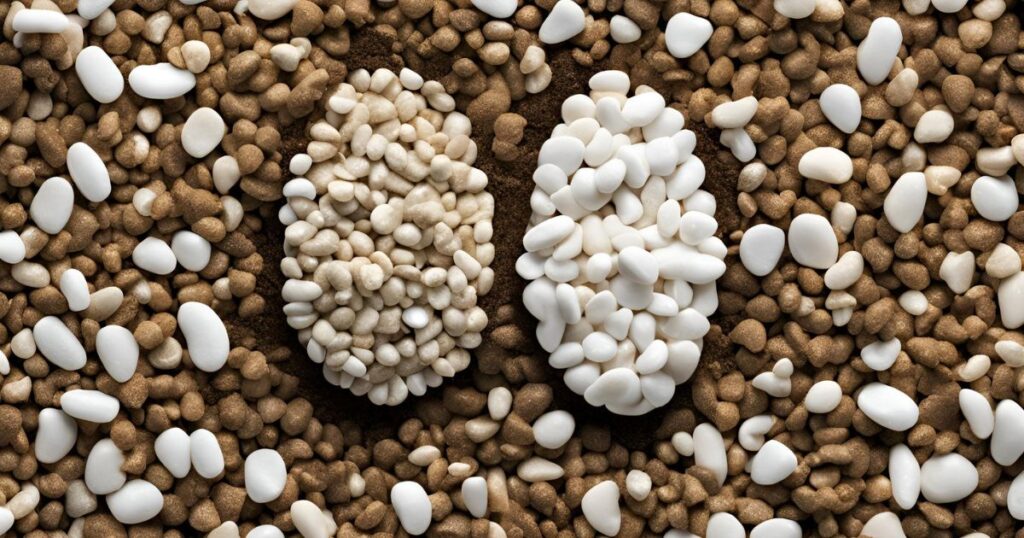
Key Differences Between Vermiculite and Perlite
- Composition and Appearance:
- Vermiculite: A mineral composed of hydrated magnesium, aluminium, and iron silicates, vermiculite appears as brownish, accordion-shaped particles that expand when heated.
- Perlite: Derived from volcanic glass, perlite is white or grey and has a granular, lightweight structure due to its puffed, popcorn-like appearance after heating.
- Water Retention and Aeration:
- Vermiculite: Known for its excellent water-holding capacity, vermiculite can retain moisture up to 16 times its weight, making it ideal for moisture-loving plants.
- Perlite: While perlite can absorb water, it is more effective at improving soil aeration and drainage, preventing soil compaction and promoting root oxygenation.
- Nutrient Interaction:
- Vermiculite: It attracts and holds essential nutrients like potassium, magnesium, and calcium, releasing them to plants as needed.
- Perlite: Perlite is chemically inert and does not retain or supply plant nutrients.
When to Use Vermiculite vs. Perlite
- Use Vermiculite When:
- Starting seeds that require consistent moisture.
- Growing moisture-loving plants such as ferns or certain tropical species.
- Improving water retention in sandy soils.
- Use Perlite When:
- Cultivating plants that prefer well-drained soil, like cacti and succulents.
- Enhancing aeration in heavy or clay soils.
- Reducing soil compaction in container gardening.
Choose vermiculite to increase moisture retention and nutrient availability in your soil, and opt for perlite to improve drainage and aeration. Selecting the appropriate amendment based on your plants’ needs will promote healthier growth and more efficient water and nutrient management.
Safety Tips & Precautions When Using Vermiculite
When working with how do you use vermiculite in gardening, following safety guidelines is essential to ensure your well-being. Here’s what you need to know:
Proper Handling and Storage
- Handling: Always work in well-ventilated areas to minimize inhalation of dust particles. Additional protection can be obtained by donning a dust mask.
- Storage: Vermiculite should be kept dry and cool, away from moisture and direct sunlight to maintain its effectiveness and prevent degradation.
Choosing Asbestos-Free Vermiculite
Some vermiculite products, particularly those mined before 1990, may contain asbestos, a hazardous material when inhaled. To ensure safety:
- Source Verification: Purchase vermiculite from reputable suppliers who provide documentation confirming their products are asbestos-free.
- Product Labels: Look for labels indicating that vermiculite is tested and certified asbestos-free.
- Historical Products: Be cautious with older vermiculite insulation, such as Zonolite®, which was mined near Libby, Montana, and is known to be contaminated with asbestos. If your home contains this insulation, avoid disturbing it and consult professionals for handling.
Best Practices for Mixing and Application
- Dust Control: To minimize dust, lightly moisten vermiculite before mixing it with soil or other materials.
- Protective Gear: When applying, put on a dust mask to prevent breathing in tiny particles and gloves to prevent skin irritation.
- Clean-Up: After handling vermiculite, wash your hands thoroughly and clean any equipment used to prevent the spread of dust.
By following these safety guidelines and measures, you can effectively and how to use vermiculite safely use vermiculite in your gardening practices. how to store bare root strawberries
How to Make the Best Potting Soil Mix
Creating your potting soil mix is one of the best ways to ensure your plants get exactly what they need. A high-quality homemade potting mix saves money and gives you complete control over your garden’s health.
Start with a Base: Use 2 parts peat moss or coco coir—both are great for water retention and aeration. If you’re eco-conscious, go with coco coir.
Add Drainage: Mix in 1 part perlite or coarse sand. This improves airflow and helps roots breathe, which is crucial to avoid soggy soil and root rot.
Nutrient Boost: For essential nutrients, include 1 part compost or well-rotted manure. Compost adds life to the soil and encourages microbial activity.
Optional Add-Ins: Want more? Add a handful of worm castings, a bit of crushed eggshell, or organic fertilizer for an extra kick.
Mix everything thoroughly in a large bin or wheelbarrow. Adjust the texture—if it feels too heavy, add more perlite; if it is too light, add compost. Store it in a sealed container and moisten it before use.
Conclusion
Vermiculite is a versatile and valuable addition to any gardener’s toolkit. Its ability to enhance soil aeration, improve water retention, and provide essential nutrients makes it particularly beneficial for seed-starting and cultivating moisture-loving plants. Incorporating vermiculite into your gardening practices can create a more conducive environment for healthy and thriving plants.
We encourage you to use vermiculite in your garden and observe its positive impact on your plants. Whether starting seeds, improving soil structure, or exploring other gardening applications, vermiculite offers a versatile and effective solution.
Have you used vermiculite in your gardening endeavours? In the comments section below, share your insights and advice—we’d love to hear how vermiculite has benefited your garden!
FAQs:
1. What is vermiculite, and how is it used in gardening?
When heated, the naturally occurring mineral vermiculite expands, forming lightweight, accordion-shaped particles. It improves soil aeration, enhances water retention, and provides essential nutrients, particularly beneficial for seed starting and moisture-loving plants.
2. What are the benefits of using vermiculite in my garden?
Vermiculite offers several advantages:
- Improved Soil Aeration: It creates air pockets in the soil, allowing roots to access oxygen more efficiently.
- Enhanced Water Retention: Vermiculite can absorb and retain moisture, gradually releasing it to plants, which benefits moisture-loving plants.
- Nutrient Availability: It attracts and holds essential nutrients like potassium, magnesium, and calcium, aiding plant propagation and healthy growth.
3. How do I use vermiculite for seed starting?
To use vermiculite for seed starting:
- Mixing: Combine vermiculite with seed-starting soil to enhance water retention and aeration.
- Top Dressing: Use vermiculite as a top dressing to retain moisture.
- Pure Medium: Start seeds in pure vermiculite and transplant them later.
These methods create an optimal environment for seed germination.
4. Is vermiculite safe to use in gardening?
Vermiculite itself is safe for gardening. However, some vermiculite products, particularly those mined before 1990, may contain asbestos, a hazardous material when inhaled. To ensure safety:
- Source Verification: Purchase vermiculite from reputable suppliers who provide documentation confirming their products are asbestos-free.
- Product Labels: Look for labels indicating that vermiculite is tested and certified asbestos-free.
- Historical Products: Be cautious with older vermiculite insulation, such as Zonolite®, which was mined near Libby, Montana, and is known to be contaminated with asbestos.

